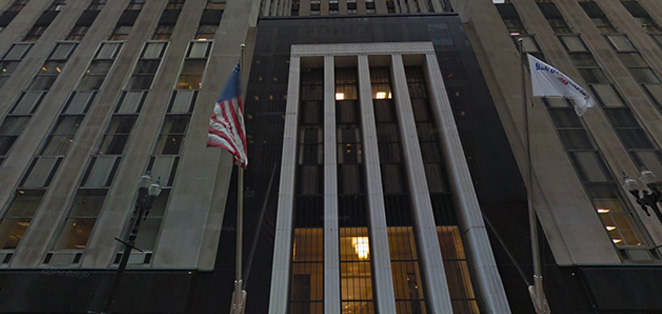United Conveyor Corp. v. Allstate Fire & Casualty Insurance Company 2017 IL App (1st) 162314
Holding: Trial Court properly granted Travelers Insurance Company Motion for Summary Judgment finding that the continuous manufacture and sale of conveyor systems incorporating asbestos containing products, which was the predicate for the claimed liability, was a single occurrence for the purpose of setting the insurer’s liability.
Facts
United Conveyor is a family owned business which designs, manufactures and sells ash handling conveyor systems for coal plants according to the customer’s individual specifications. Starting in the 1930’s continuing through 1979, United both individually and through a third party, incorporated asbestos containing components into the conveyor systems that it sold.
The asbestos products were identified as Nuvaseal and asbestos cement.
Between 1952-1977 Travelers issued several primary level comprehensive general liability and umbrella policies. From 1952-1974, 22 of the policies issues by Travelers contained aggregate limits that were higher than the per occurrence limit. The policies defined occurrence as “an accident, including continuous or repeated exposure to conditions, which results in bodily injury”. The number of occurrences determined whether the policies per occurrence limits or higher aggregate limits applied.
Starting in 1983 and the years following, United was named as a defendant in thousands of lawsuits, in multiple jurisdictions, by individuals claiming personal injury arising from exposure to asbestos fibers discharged during the installation, maintenance or repair of its ash handling conveyor systems. Travelers defended these claims under a reservation of rights, specifically reserving the right to enforce the policies applicable limits of liability.
In January 2009, Travelers advised United that ‘all of the primary policies have been exhausted’. United interpreted this notice to mean that the policies’ per occurrence and not the aggregate, limits applied. The record did not reflect any contemporaneous writing reflecting United’s belief that until 2009, Travelers treated the design and installation of each conveyor system as a separate occurrence.
In August, 2012, United filed a complaint seeking a declaration that the asbestos claims constituted multiple occurrences, triggering the policies higher aggregate limits and not the per occurrence limits. The complaint also included a single count of breach of contract asserting that Travelers treatment of the asbestos losses as a single occurrence breached the policies terms and conditions.
Eventually, United filed a Motion for Partial Summary Judgment asserting the underlying asbestos claims arose out of multiple occurrences, specifically the installation and ongoing maintenance of each conveyor system. United also alleged that Travelers breached the insurance contract by contending the underlying asbestos claims arose from a single occurrence. United’s third argument was that Travelers waived and was estopped from asserting the argument that the underlying claims constituted a single occurrence because Travelers failed to reserve its rights under the policies given that it defended United’s asbestos losses as multiple occurrences for decades.
Thereafter Travelers filed a cross Motion for Summary Judgment asserting the claims were based on a single occurrence because they were based on United’s continuous manufacture and sale of conveyor systems containing asbestos components. Travelers further asserted that United’s waiver and estoppel claims were waived because the claims were not included in United’s complaint. United opposed Travelers arguments and specific to the waiver and estoppel claim did not seek to file an amended complaint.
Importantly, during the litigation, the parties had stipulated as follows: for purposes of determining the limit of Travelers’ liability, all bodily injury and property damage arising out of continuous or repeated exposure to substantially the same general conditions shall be considered as arising out of one occurrence’.
The trial court granted Travelers’ Motion for Summary Judgment, finding that the underlying asbestos claims constituted a single occurrence because they arose from the continuous manufacture and sale of the conveyor systems that used asbestos containing materials.
Subsequent to the trial court’s decision, United sought leave to amend its complaint to add a claim seeking a declaration that Travelers waived its ability to assert that the asbestos claims arose from a single occurrence or alternatively, was estopped from asserting that position. Relying upon Loyola Academy v. S&S Roof Maintenance, Inc., 146 Ill.2d 263 (1992), the trial court denied United’s motion, finding it had not satisfied the Loyola factors.
Due to pending cross claims among the remaining defendants, the trial court granted United’s Rule 304(a) finding.
Analysis[1]
Based on United’s primary argument which was that each underlying claim was a separate occurrence relating to each conveyor system’s installation and maintenance rather than a continuous or repeated exposure to asbestos relating to a single occurrence, the Court’s opinion focused on an analysis of the “cause” theory of liability. Under the “cause” theory the number of occurrences is decided by determining the cause of the damage rather than looking at the consequences of the damage. United States Gypsum Co. v. Admiral Insurance Co., 268 Ill.App. 3d 598, 648 (1994).
United relied upon Nicor, Inc. v. Associated Electric & Gas Insurance Services Ltd., 223 Ill.2d 407, 420 (2006), which treated numerous instances of the release of mercury as separate occurrences as being dispositive. Travelers, in contrast, relied upon Gypsum where multiple claims for property damage resulting from Gypsum’s manufacture and sale of asbestos containing building materials were considered a single occurrence.
The Court’s analysis focused on the factual distinction in the cited cases. Nicor involved 195 claims arising from the replacement of natural gas regulators in its customers’ residences. Of significance, and what was dispositive of the analysis that each claim was a separate occurrence, was that the claims arose from the intervening negligence of the workers which had replaced the meters, not the providing of the regulators.
Contrast the facts in Gypsum, which involved more than 200 property damage claims arising from the installation of asbestos containing products in schools and other public buildings. Gypsum argued that its conduct in manufacturing and selling asbestos containing building materials was a single continuous process, and thus its conduct fell within the policies provision for the “continuous or repeated exposure to substantially the same condition or a ‘common defect condition or cause” both of which were treated as a single occurrence. Ultimately, after an exhaustive analysis, the Court held that Gypsum’s liability was predicated on its involvement with and sale of the products rather than the installation. Accordingly, since Gypsum was engaged in the continuous process and repetitive conduct of manufacturing and selling asbestos containing building materials, the Court determined the property damage claims were the product of a single occurrence.
Applying the above analysis to the facts involving United’s activities, the Court determined that United’s loss was the continuous manufacture and sale of its conveyor systems incorporating the asbestos containing components. Thus, unlike in Nicor, the liability was not premised upon a separate human intervening event. Rather, since the single, unitary cause of claims was the incorporation of asbestos containing components into the conveyor system, the cause of loss was attributable, as in Gypsum, to a single occurrence and as a consequence, the per occurrence limit applied.
The Court also considered United’s claim that the Trial Court abused its discretion in denying the motion to amend. Reviewing the Loyola factors which must be considered when the motion is brought on a postsummary judgment motion to amend: 1) whether the proposed amendment would cure the defective pleading 2) whether other parties would sustain prejudice or surprise by virtue of the proposed amendment 3) whether the proposed amendment is timely and 4) whether previous opportunities to amend the pleadings could be identified; the Court determined United’s motion was untimely and that it had prior opportunities to amend the complaint prior to the ruling on the Motion for Summary Judgment. Accordingly, the Trial Court’s denial of the Motion to Amend was also affirmed.
[1] The entire record was under seal and the Appellate Court reviewed the history of the original Order and the parties apparent joint decision regarding this issue. Ultimately the Appellate Court found there was no basis for the case to remain under seal and vacated the Order. That part of the opinion is not material to the issues and not discussed in this case note.

